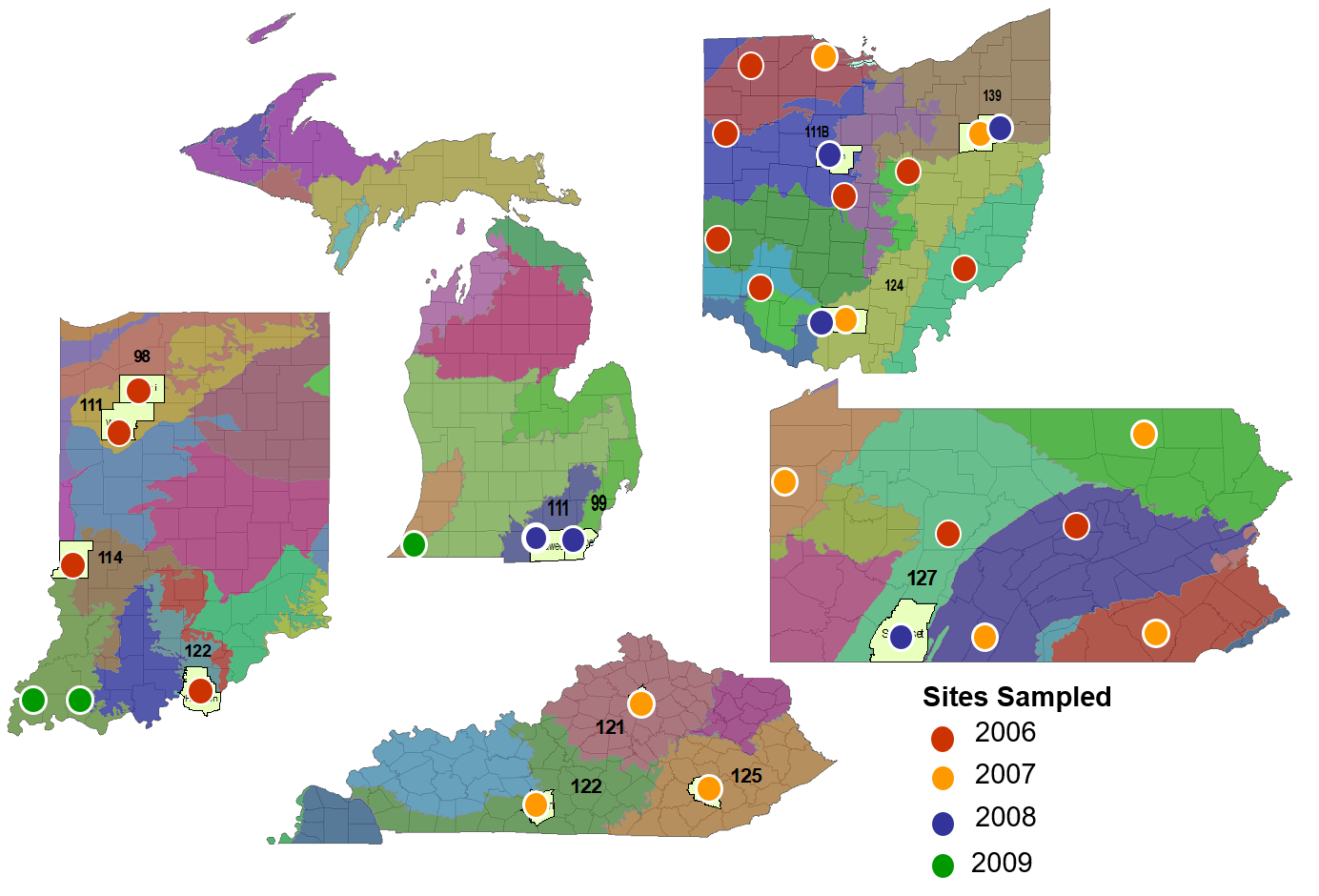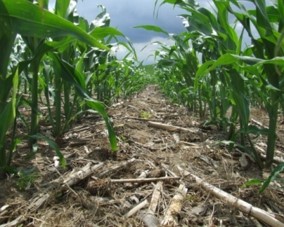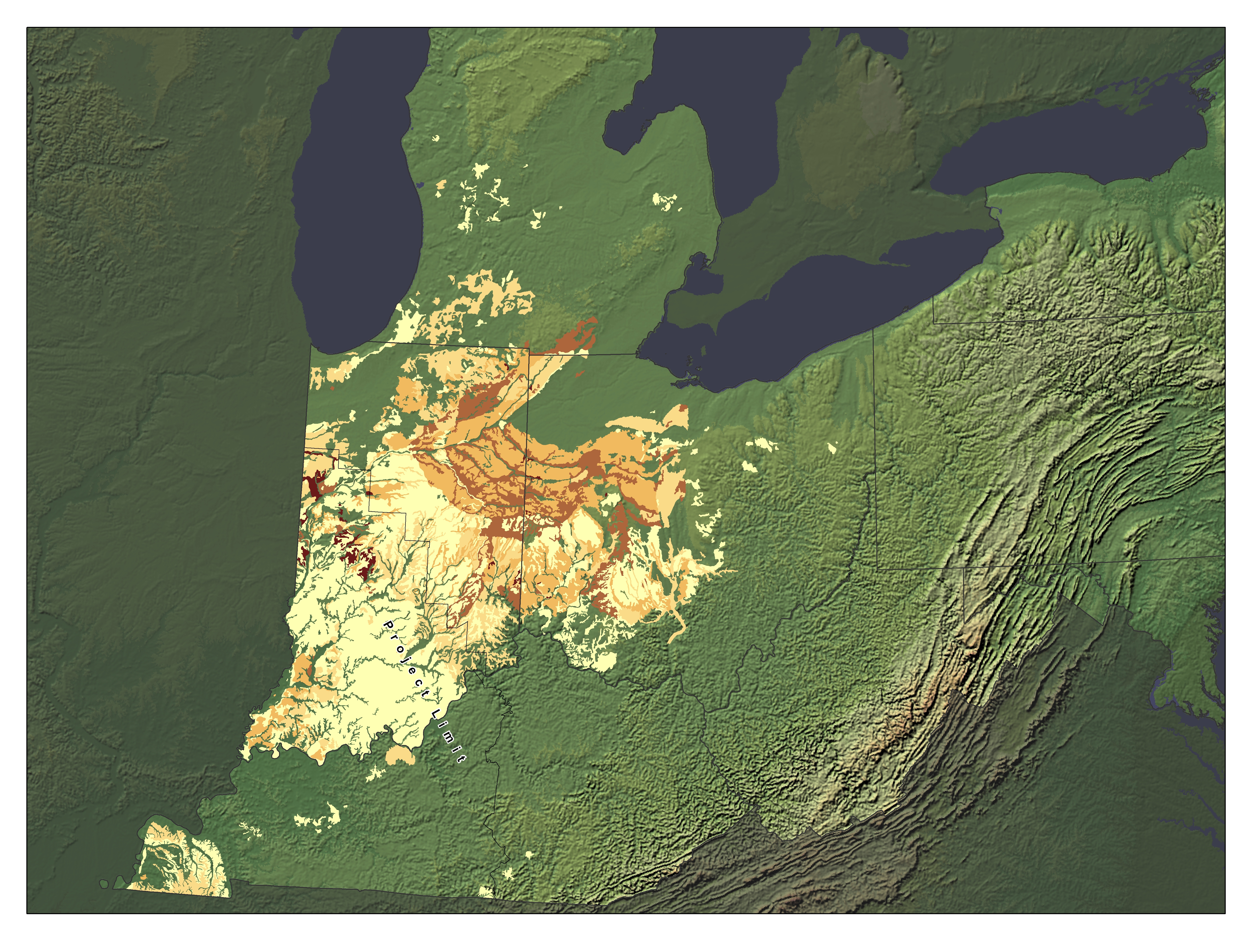Carbon Storage Atlas
- Why This Location
- Main Research Q&As Discovered
- Lessons Learned
- Story of Interest
- Links to EDX
- Sites
Site: Croplands – Ohio State University School of Environment and Natural Resources, Carbon Research Center
Lat/Long
Cropland terrestrial field tests were conducted by Ohio State University (OSU) on farmland in Indiana, Kentucky, Michigan, Ohio, and Pennsylvania
Terrestrial Croplands: 40.52337, -83.292430 (approximate, multiple test sites)
Why this Location?
Multiple sites were selected across the Midwest Regional Carbon Sequestration Partnership (MRCSP) region to capture variability in soil properties to better assess the carbon dioxide (CO2) storage potential in croplands.
Main Research Q&As Discovered
The main objectives of this study included demonstrating carbon sink capacity for croplands; developing credible measuring, monitoring, and modeling protocols to evaluate carbon sink capacity; and assessing the mechanism of carbon storage. The findings from the research showed that the quantity and rate of carbon loss and carbon storage depends on soil type, texture and drainage, tillage intensity, and duration of no-till (NT) management. A rapid decrease in soil organic carbon (SOC) and nutrients occurs when forest soils are cultivated. The NT management practices potentially restore SOC that was otherwise depleted due to the tillage practices. The NT practices improve the SOC and, hence, the soil hydraulic properties (such as water retention, hydraulic conductivity, and pore size distribution) compared to mold board plow and chisel plow. The crop residue left on top of the soil in NT practices improves the soil hydraulic properties. The geographic information system (GIS) studies conducted under the Midwest Regional Carbon Sequestration Partnership (MRCSP) project showed that SOC can be estimated at a larger (state and regional) scale. While the soil sampling at the state and regional scale is expensive and time consuming, the GIS findings showed that surface interpolation methods (e.g., ordinary kriging, multiple linear regression, geographically weighted regression [GWR] and regression kriging) can be used to estimate the SOC pool at a larger scale. The SOC pool to 50 centimeters soil depth for the MRCSP region was calculated to be 6.21 billion metric tons. A higher SOC pool in the region was attributed to the high rainfall, low temperature, and the presence of Histosols and Mollisols in this region.
Lessons Learned
The validation studies in croplands have resulted in the following best practices:
- Residue retention as surface mulch is essential for soil carbon storage and soil quality improvement in a no-till (NT) system.
- The NT practices are very effective in enhancing soil organic carbon (SOC); however, this effect depends on soil depth and duration of management practice.
- Rates of soil carbon storage (0.25 to 1 metric ton carbon per hectare per year) depend on soil properties, crop rotations, residue management, soil fertility management, and the time since conversion from plow tillage to NT. Residual removal adversely impacts soil quality.
- Residence time of carbon stored in soil depends on soil properties, depth, land use, and management. The soil carbon pool is maintained or enhanced as long as NT systems and other best management practices are used.
- The soil carbon pool stored in deeper layers (greater than 30 centimeters) is the most important fraction for long-term SOC storage, as it is stabilized in association with the soil mineral phase, resulting in long carbon mean residence time.
Story of Interest
Croplands field testing was completed on operating farms across the region. The farmers were interested in new methods to increase their crop yield and store carbon at the same time; a “win-win” situation for everyone. The research included weighing corn produced from till and no-till (NT) plots, real field data!






